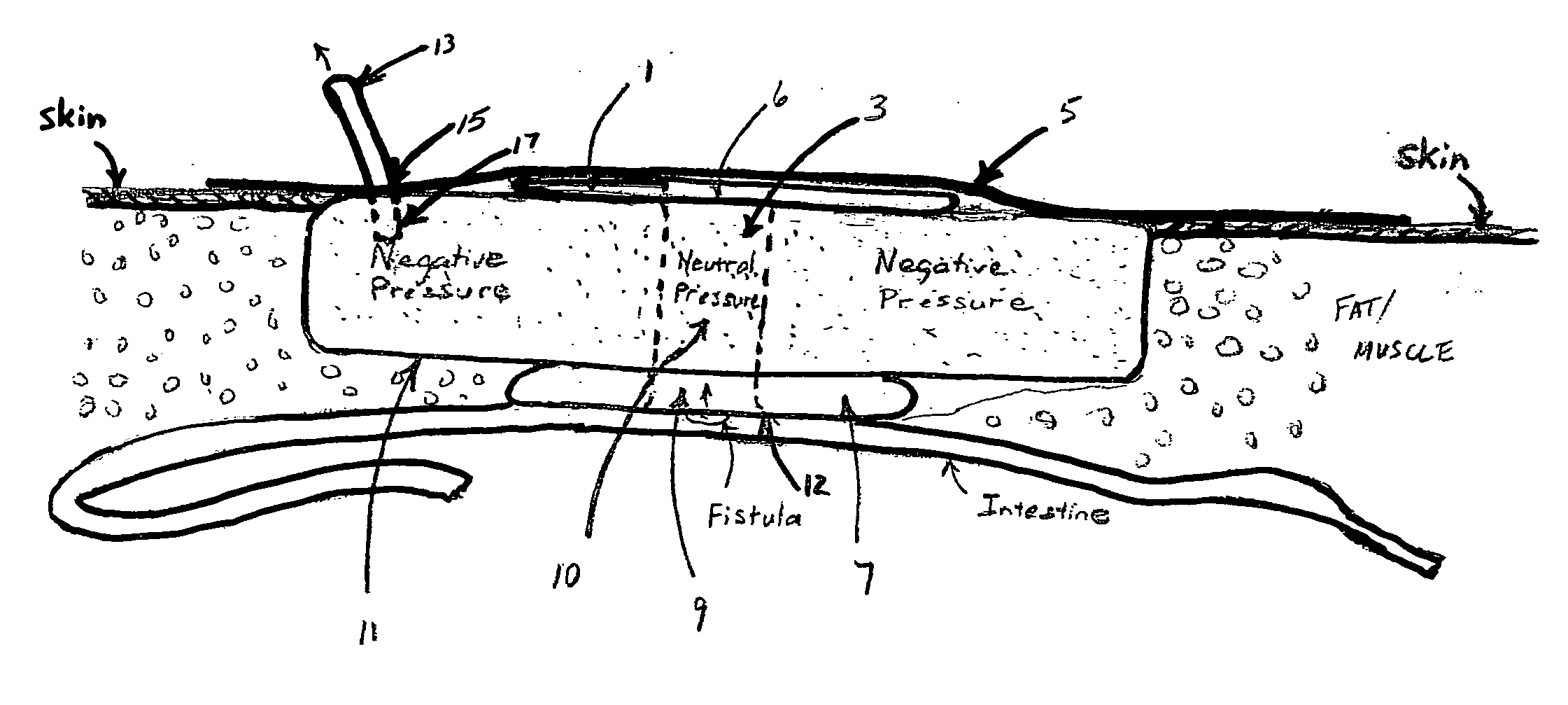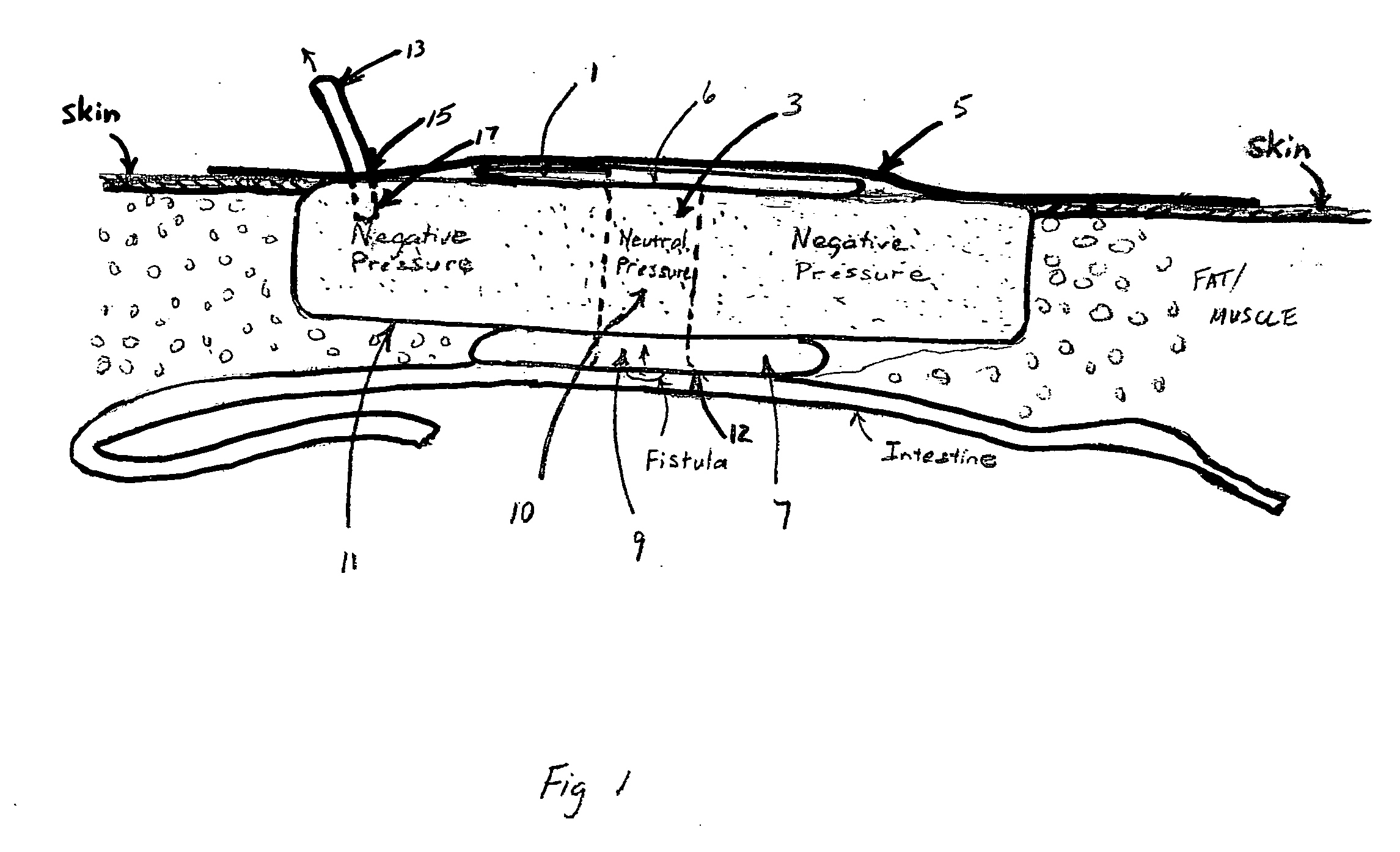Fluid isolation device and method for treatment of fistulas
a technology of fluid isolation device and fistula, which is applied in the direction of suction device, intravenous device, wound drain, etc., can solve the problems of life-threatening situation, difficult treatment of open wounds of the body, and limited ability of standard ostomy appliances to control fluids
- Summary
- Abstract
- Description
- Claims
- Application Information
AI Technical Summary
Problems solved by technology
Method used
Image
Examples
Embodiment Construction
[0017]The invention is shown in place in FIG. 1. Rigid flange 1 has an opening 6 that is adjacent a preferably rigid tubular passageway 3, which passageway extends to the balloon type toroidal sealing means 7, which sealing means has opening 9. The sealing means opening is placed to fully encompass the fistula. The rigid flange 1, the tubular passageway 3, and the sealing means 7, combine to form a sealed passageway 10 that is able to maintain at local atmospheric pressure a neutral pressure zone, while maintaining a surrounding negative pressure zone (less than atmospheric pressure) sufficient to create and maintain the seal around the opening of the toroidal balloon means at 12. Occlusive dressing 5 having adhesive is placed over the flange and across the skin to create the entire seal for the VAC. The negative vacuum, created using a vacuum device attached to tube 13 entering through the dressing at 15, also draws the toroidal balloon sealing means tight over the area around the ...
PUM
 Login to View More
Login to View More Abstract
Description
Claims
Application Information
 Login to View More
Login to View More - R&D
- Intellectual Property
- Life Sciences
- Materials
- Tech Scout
- Unparalleled Data Quality
- Higher Quality Content
- 60% Fewer Hallucinations
Browse by: Latest US Patents, China's latest patents, Technical Efficacy Thesaurus, Application Domain, Technology Topic, Popular Technical Reports.
© 2025 PatSnap. All rights reserved.Legal|Privacy policy|Modern Slavery Act Transparency Statement|Sitemap|About US| Contact US: help@patsnap.com



